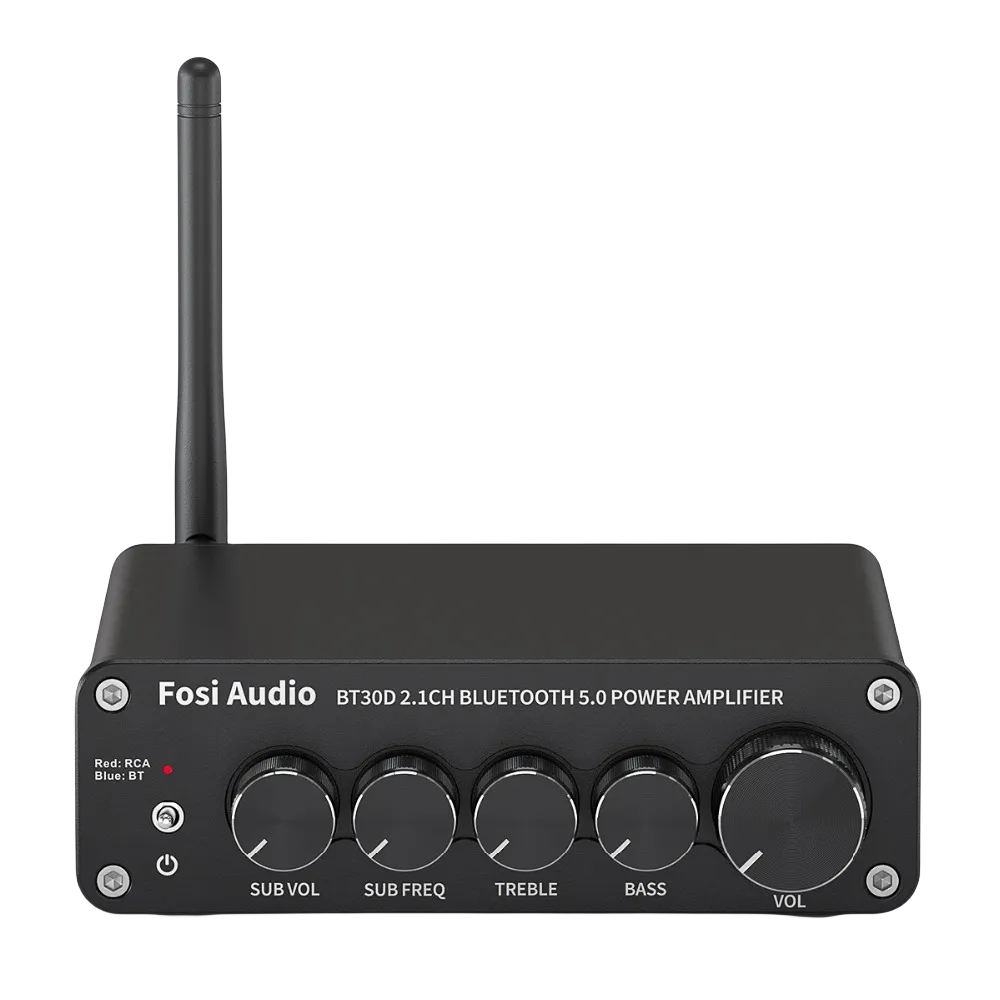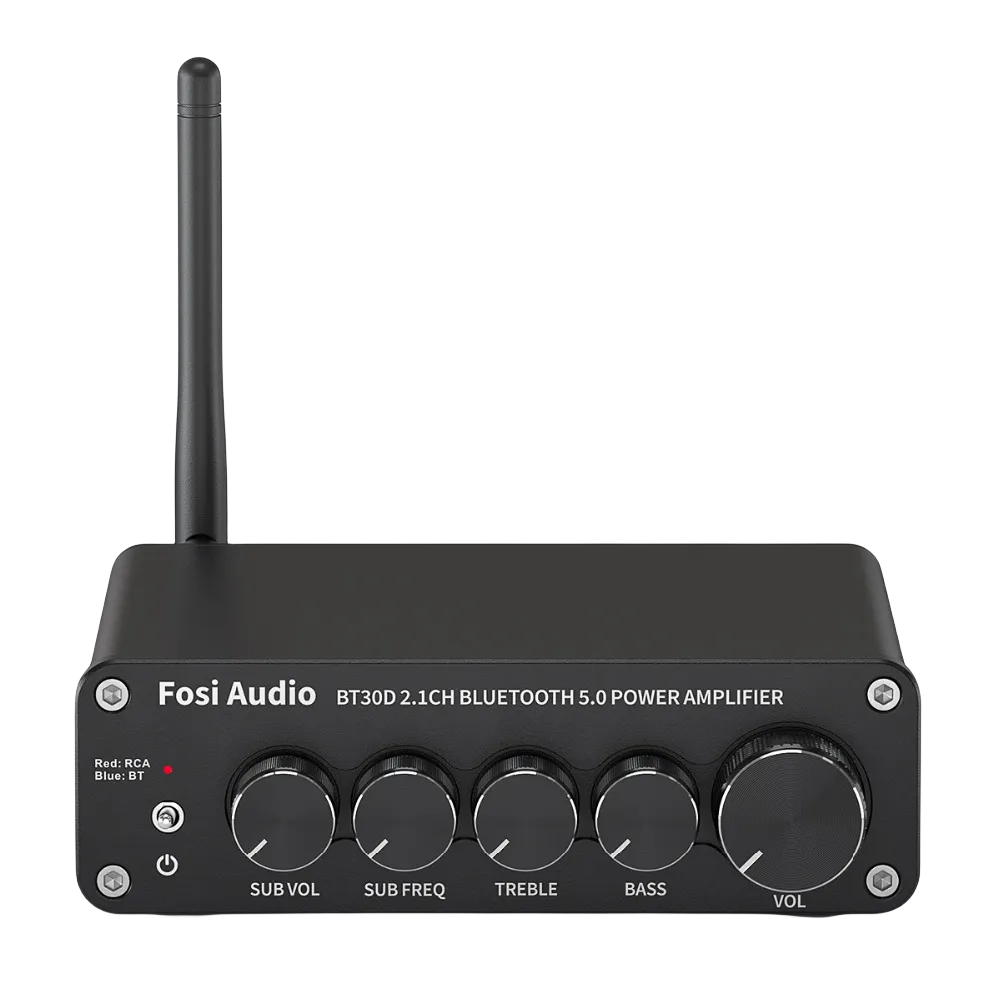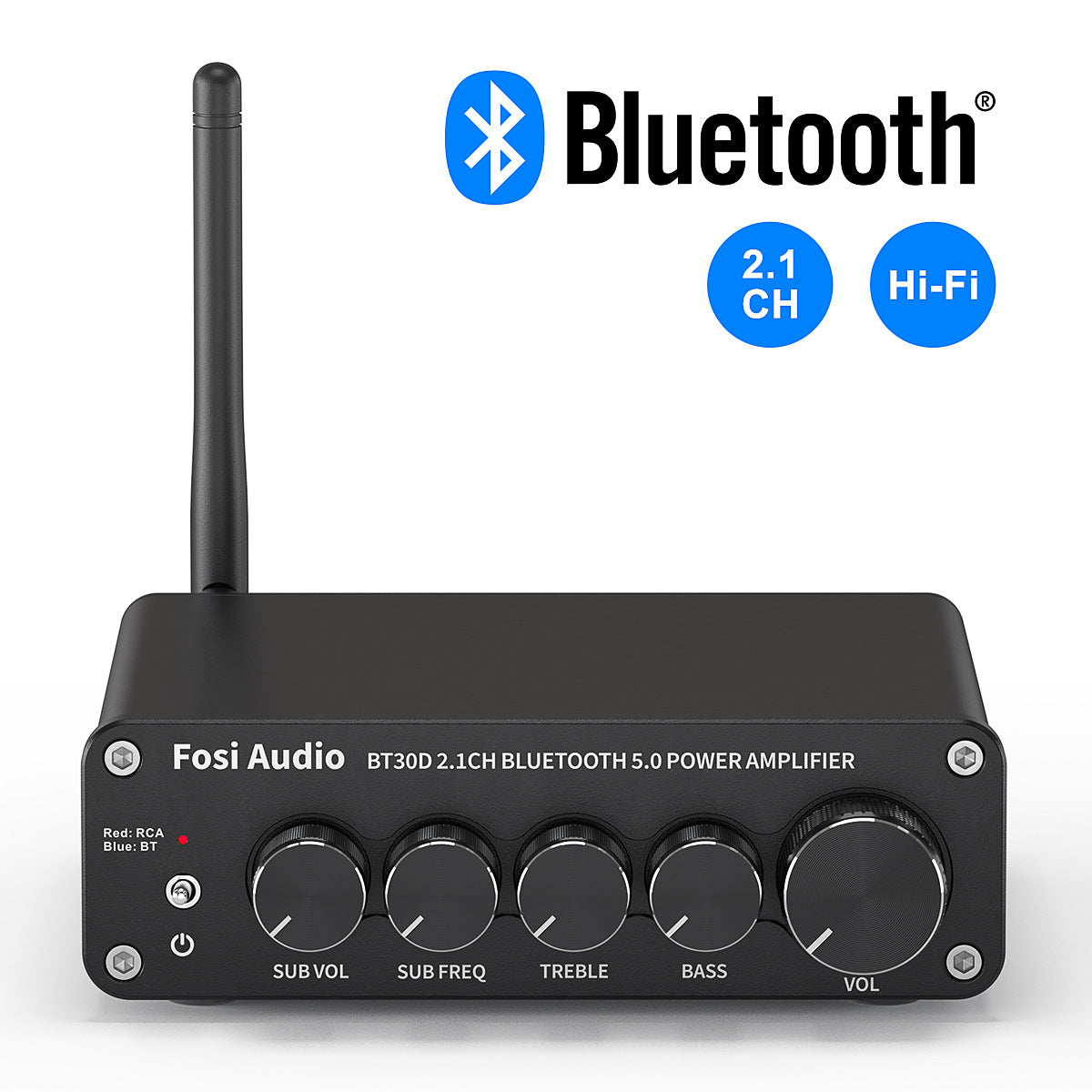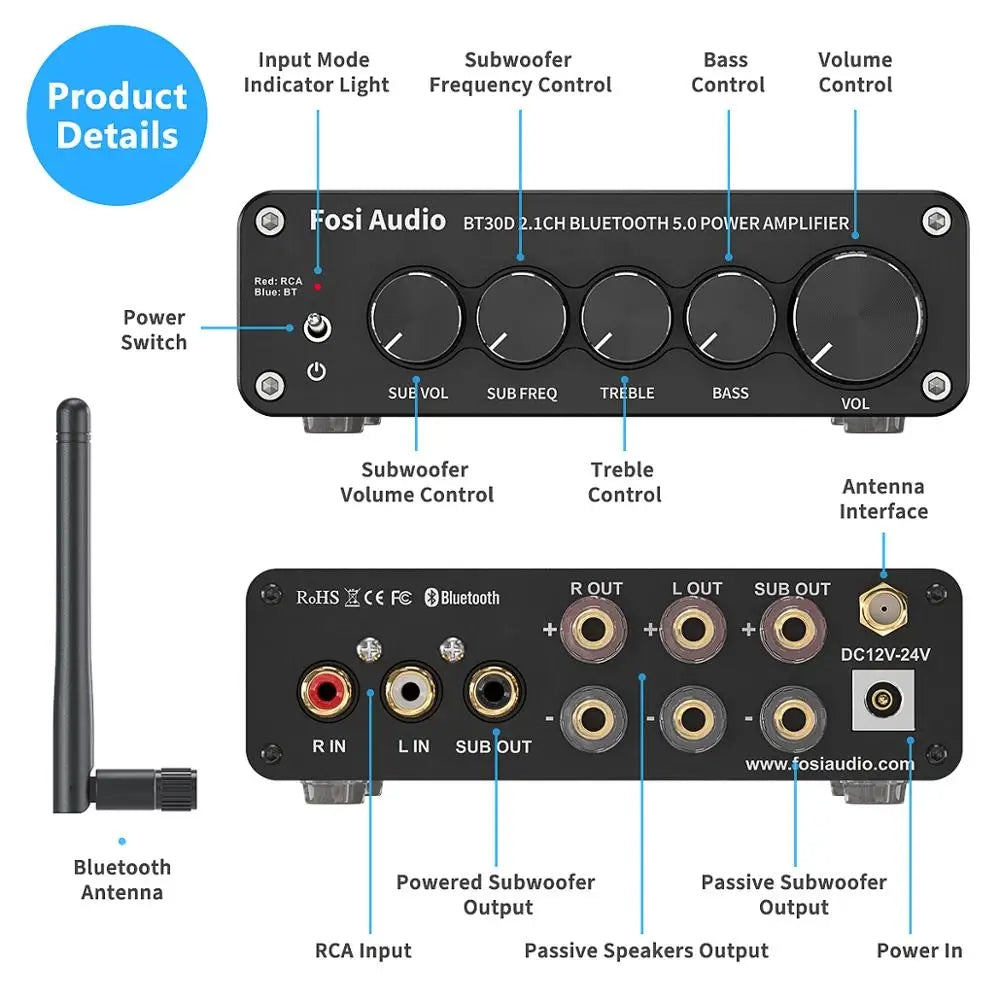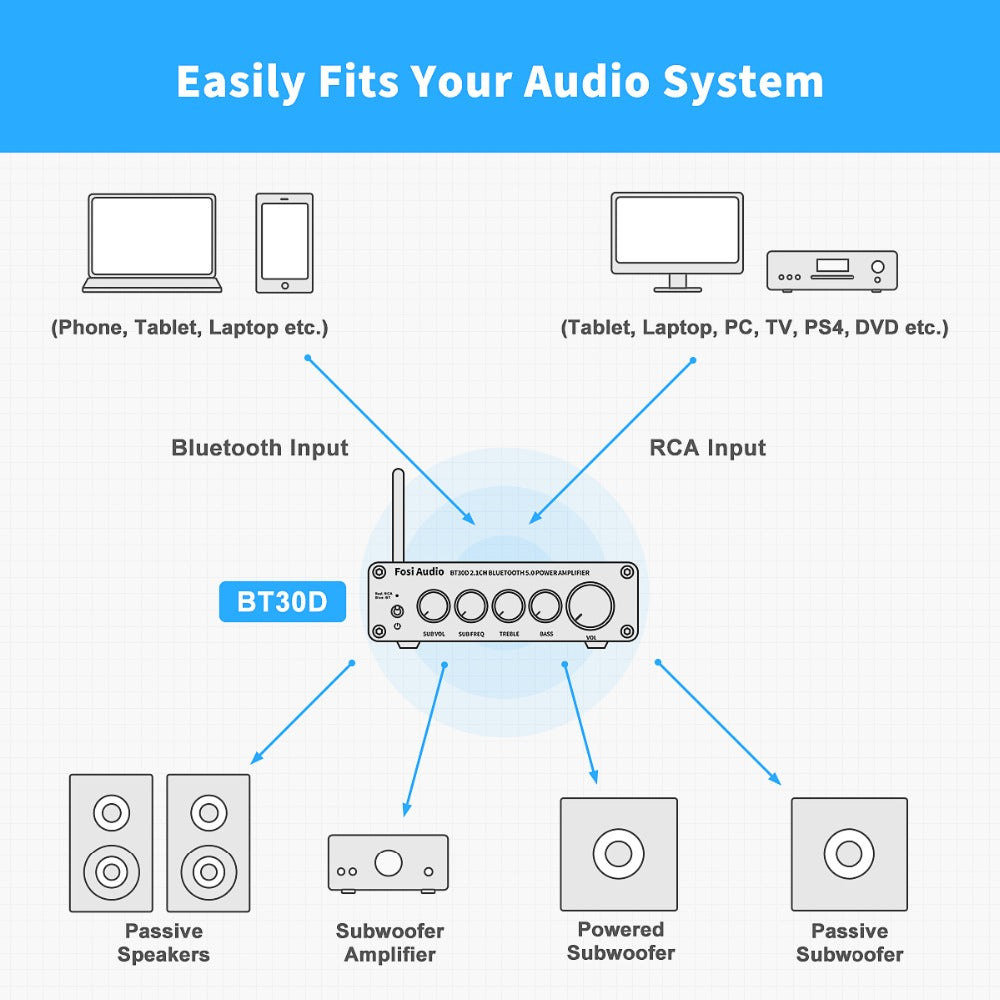
Audio Amplifiers and Distortion: Working Principles and Common Issues Guide
Share
In audio systems, an audio amplifier is a device that amplifies weak audio signals (such as from a microphone or guitar) to a level sufficient to drive speakers. Although its primary function is to enhance the signal, distortion can occur during this amplification process. Distortion refers to changes in the audio signal, causing it to lose its original purity and accuracy. To understand how audio amplifiers work and how to address distortion issues, we need to explore the amplifier’s basic principles, types of distortion, and their effects.
Basic Principles of Audio Amplifiers
The principle of operation for audio amplifiers is relatively simple: they receive an input signal (typically a low-level audio signal) and, through a gain process within the circuit, increase its amplitude to a level that can drive a speaker or other output devices. This process is typically achieved using one or more electronic components, such as transistors, operational amplifiers, or vacuum tubes.

Key specifications of an audio amplifier include:
Gain: The ratio of the output signal to the input signal, representing the amplification factor.
Frequency Response: The range of frequencies the amplifier can handle. Ideally, an audio amplifier should work within the entire audible frequency range (20Hz to 20kHz).
Total Harmonic Distortion (THD): A measure of the distortion introduced by the amplifier as it amplifies the signal, usually expressed as a percentage. A lower THD means less distortion.
Signal-to-Noise Ratio (SNR): A measure of how much noise is present in the output signal. A higher SNR means the output is cleaner with less noise.
Types of Distortion
Distortion is a common phenomenon in audio systems, referring to any changes that occur in the signal during amplification, resulting in a difference between the amplified signal and the original. Distortion can be categorized into several types, with the most common being:
Linear Distortion:
Linear distortion is usually caused by limitations in the amplifier’s design (such as improper gain settings or insufficient frequency response). This type of distortion does not change the shape of the audio waveform but alters its amplitude or frequency distribution. While it does not affect the relative balance of tonal qualities, it may cause certain frequency ranges to sound too loud or too soft, impacting overall sound quality.
Total Harmonic Distortion (THD):
THD is one of the most common forms of distortion. It occurs when the amplifier introduces harmonic components into the output signal that were not present in the original. These added harmonics result in nonlinear changes to the waveform. A higher THD value indicates more significant distortion, which can make the audio sound muffled or unnatural.
Crossover Distortion:
Crossover distortion typically occurs in class AB amplifiers, especially during the transition between the positive and negative halves of the output waveform. It results from the non-ideal switching of output transistors and can cause a “crackling” or “popping” effect, particularly at lower output levels.
Clipping Distortion:
Clipping distortion occurs when the audio signal exceeds the amplifier’s maximum output capacity, causing the tops and bottoms of the waveform to be "cut off." This type of distortion typically produces a harsh, "squared-off" sound, especially at high volumes, as the peaks of the waveform are chopped off.
Phase Distortion:
Phase distortion occurs when different frequencies in the signal are processed unevenly, leading to changes in their phase relationships. Ideally, all frequencies should be amplified uniformly, but if certain frequencies are delayed or advanced in phase, the sound may become “muddy” or “unnatural,” affecting tonal accuracy.
Effects of Distortion on Sound Quality
The impact of distortion on the audio signal depends on the type and degree of distortion. For example, light total harmonic distortion may add warmth or fullness to the sound (some audiophiles even enjoy this "sweet" distortion), while severe distortion can make the sound harsh or unintelligible. If the level of distortion exceeds what the human ear can tolerate, it will have a significant negative effect on sound quality.
Tone Color (Timbre) Changes: Distortion may lead to inaccurate tonal reproduction or introduce unnecessary audio components, which can reduce clarity and detail.
Volume Distortion: If the amplifier’s output exceeds the speaker’s capabilities, clipping distortion may occur, leading to a “broken” or distorted sound.
Dynamic Range Compression: Excessive distortion can compress the audio signal's dynamic range, reducing the depth of low frequencies and the brightness of high frequencies, making the sound overall less vibrant.
How to Minimize Distortion in Audio Amplifiers
There are several methods to reduce distortion, which include the following:
Choose High-Quality Amplifiers: Different types of amplifiers (such as Class A, AB, D, etc.) have different distortion characteristics. Class A amplifiers typically exhibit lower distortion but are inefficient, while Class AB amplifiers offer a better balance, and Class D amplifiers are efficient but may introduce higher distortion at certain frequencies.
Proper Gain Settings: Setting the gain too high can push the amplifier into distortion. It is important to adjust the gain appropriately to avoid excessive amplification of the signal.
Avoid Overload and Clipping: Ensure that the input signal strength does not exceed the amplifier’s maximum handling capacity, and avoid excessive volume that might result in clipping distortion.
Use Appropriate Speakers: The impedance and power handling of the speakers should match the amplifier to prevent distortion caused by overload or mismatching.
Proper Circuit Layout and Component Selection: The circuit design and components used in the amplifier greatly affect distortion. High-quality components and optimal circuit layouts can reduce distortion and improve sound quality.

Conclusion
Audio amplifiers are essential components in audio systems, responsible for amplifying audio signals to levels sufficient to drive speakers. While distortion is inevitable, choosing the right amplifier, adjusting gain, avoiding overload, and matching appropriate speakers can minimize its negative impact on sound quality. Understanding the different types of distortion and their causes helps users design and adjust audio systems for optimal sound performance.


